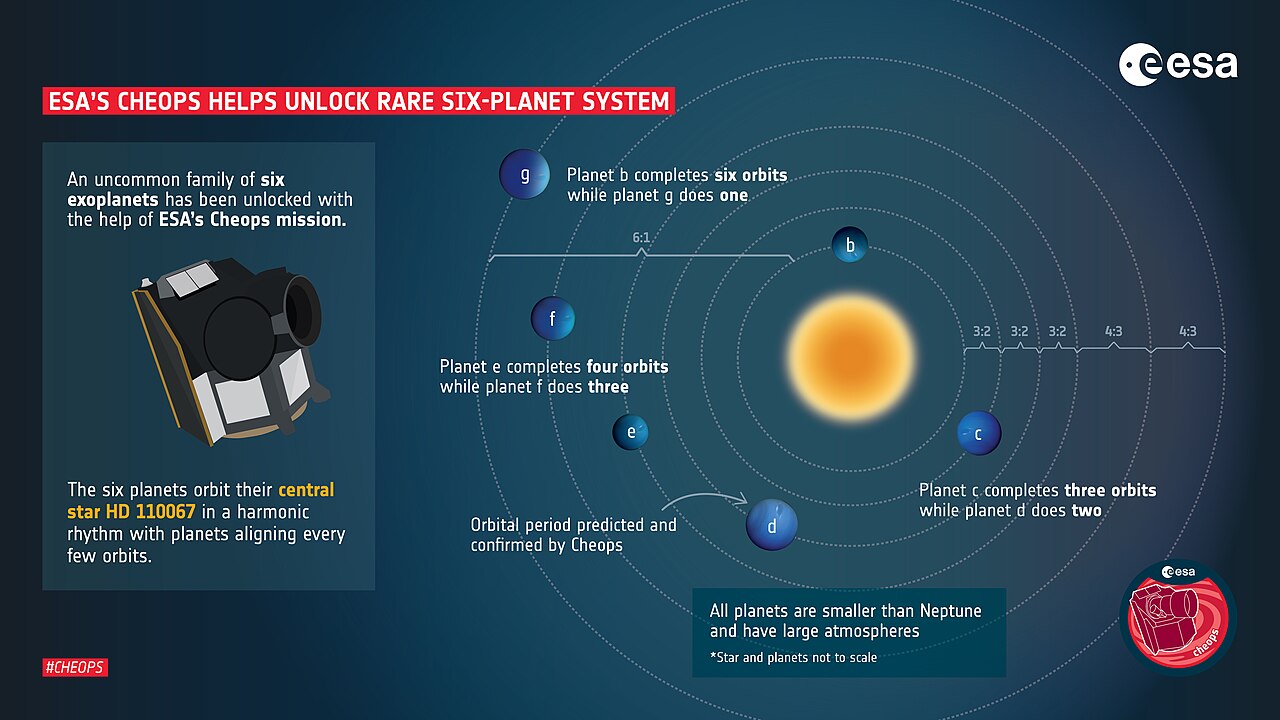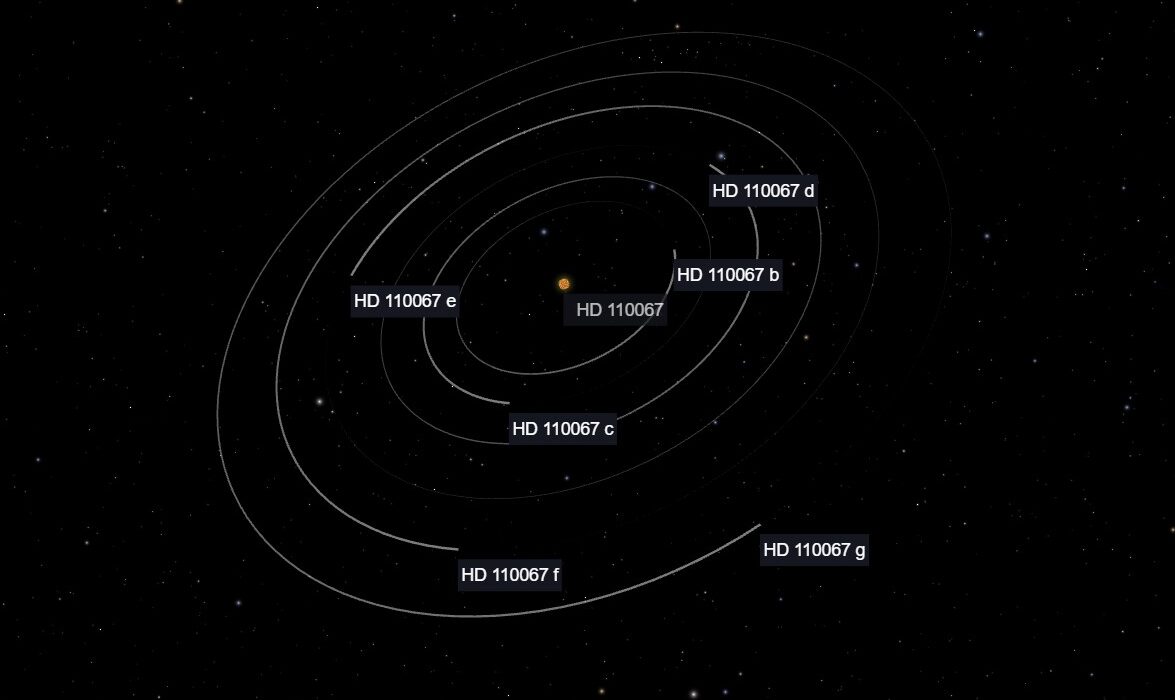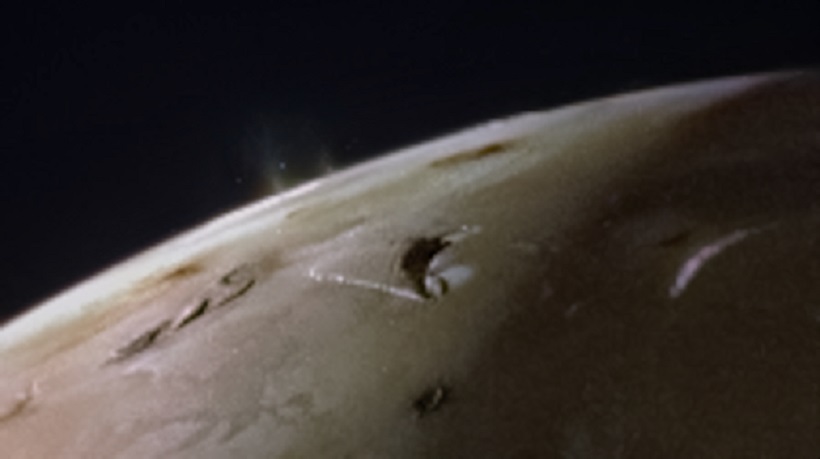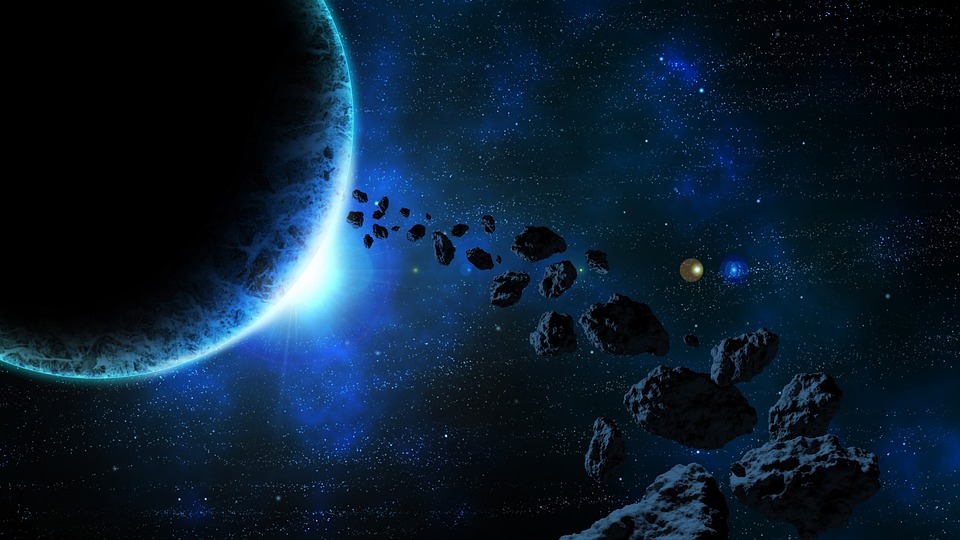Around 100 light-years from our solar system there is a planetary system, which is remarkable because of an unexpected reason. Namely, around a temperate orange dwarf, there are six orbiting exoplanets, which find themselves in perfect orbital resonance. This rare alignment, discovered around the star HD 110067, has persisted since its formation approximately a billion years ago, rendering the system remarkably stable and undisturbed.
The scientific intrigue surrounding this system extends beyond its inherent celestial beauty. Astrophysicist Carmen Choza and her team from the SETI Institute have delved into an in-depth investigation, exploring the potential implications for life within the HD 110067 system. The extraordinary stability exhibited by this cosmic arrangement provides an optimal environment for the emergence, evolution, and sustenance of life, according to Choza.
In a meticulous quest for evidence of extraterrestrial technology, Choza and her colleagues conducted an extensive search for radio signals – known as technosignatures – within the HD 110067 system. Despite their comprehensive efforts utilizing archival data from the Green Bank Telescope, the researchers found no conclusive evidence of such signals.

How can we find alien technosignatures?
The inherent challenges in detecting alien technosignatures within our vast galaxy are formidable. The Milky Way’s expansive scale and the limited understanding of potential communication methods employed by extraterrestrial civilizations pose significant obstacles. Drawing inspiration from Earth’s radio signals, the SETI team extrapolates potential characteristics of alien technology, creating a theoretical framework for scanning nearby systems.
The allure of the HD 110067 system extends beyond its orbital stability. All six exoplanets within this celestial ensemble are smaller than Neptune, with some possibly featuring liquid water on their surfaces – a key criterion in the search for extraterrestrial life. Despite the lack of specific technosignatures in the Green Bank data, the physical characteristics of HD 110067 continue to captivate researchers.
Choza and her team express optimism in their research paper about the potential for future discoveries, stating, “While we find no signals with this search, we anticipate returning to this system and others like it in the future with increasingly sensitive and diverse search methods. This unusual system remains an interesting target for future technosignature searches.”





